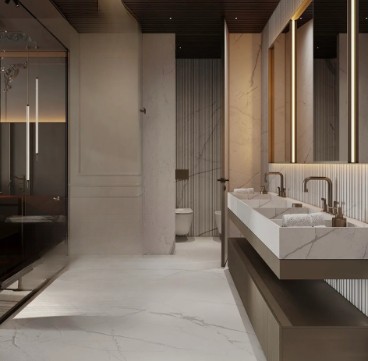CleaningTroubleshootingComplianceMaintenanceSpecsVideosDownloadsFAQContact
Maintaining Sensor Faucets Guide for Facility Managers
faucets that are dependable, clean, and effective. This guide also highlights preventative care, eco-friendly maintenance practices, and practical tips that facility managers can implement on a daily basis to extend faucet life, reduce downtime, and ensure bathrooms are always safe, secure, and functioning.
Download Checklist (PDF)Watch Tutorials
Top 5 Actions
1. Clean the sensor window weekly.
2. Descale aerators; clean inlet filters monthly.
3. Verify pressure & flow match spec.
4. Check batteries / power adapters.
5. Log maintenance to protect warranty.
Step‑by‑Step Cleaning
Safety & Tools
- Isolate water & power before disassembly.
- Soft cloths, mild detergent, white vinegar, soft brush, protective pliers.
- Model spec sheet on hand (flow, pressure, power, sensor type).
Exterior & Sensor
- Wipe body/spout with mild soap. Avoid abrasives & harsh chemicals.
- Clean IR window; remove film, dust, and smudges.
Aerator & Filters
- Soak aerator in vinegar; rinse and reinstall.
- Open and clean inlet strainer / mesh filter before the solenoid.
Troubleshooting
No Activation
- Check power, clean sensor, open supply valves.
- Clean filters; if solenoid clicks but no flow, inspect diaphragm.
Won’t Shut Off
- Debris in valve; clean/replace diaphragm.
- Reduce sensor range; check false triggers and wiring.
Weak / Irregular Flow
- Verify pressure within spec; clean aerator and filters.
- Inspect hoses for kinks; replace worn solenoid parts.
3.3. Compliance & Specification Focus
| Item | Why It Matters | What to Check |
|---|---|---|
| Flow Rate (GPM/LPM) | Water‑savings & splash control | Measure & match model spec; verify restrictors |
| Operating Pressure | Low → weak flow; High → leaks/damage | Supply range in spec; add regulator if needed |
| Power | Wrong voltage or weak batteries = erratic behavior | Confirm adapter rating; use recommended batteries |
| Temperature | Scald protection & mixing stability | Thermostatic/mixing valves; verify setpoints |
| Accessibility (ADA) | Public facilities usable by all | Clearance, reach, hands‑free operability |
| Certifications | Material & safety standards | Use OEM parts; retain records for audits |
Spec Sheet (Editable)
| Model | — |
|---|---|
| Flow Rate | — |
| Operating Pressure | — |
| Power | — |
| Certifications | — |
| Warranty | — |
Edit Specs
Model
Flow Rate
Operating Pressure
Power
Certifications
Warranty
Apply
Instructional Videos
Set Your YouTube Links
Cleaning URLFilters URLSensor URLUpdate Videos
Cleaning
Filters
Sensor
Downloads & Templates
Maintenance Checklist (PDF)Maintenance Log (XLSX)A4 Quick Card (PDF)
FAQ
How often should batteries be replaced?
Depends on usage; check indicators monthly and replace at the first sign of slow response or failure to trigger.
The faucet won’t stop running—what now?
Clean the inlet filter and inspect the diaphragm for debris or wear. Reduce sensor range if false triggers persist.
How do I know the filter is clogged?
Reduced or irregular flow is the first sign. Remove and rinse the filter screen; descale if needed.
Can bright lights or reflections cause false triggers?
Yes—adjust sensor range/angle and reduce reflective surfaces facing the sensor.
Talk to an Expert
Need a customized checklist or help mapping specs to your facility? Tell us about your site.Name
Email
Facility Type
Notes
Request Consultation
© 2025 BathSelect. All rights reserved. • Support • Warranty • Maintenance Policy • Contact
